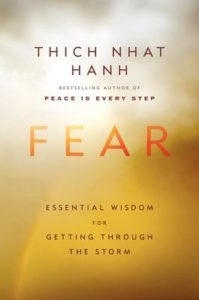
CODA
Released Aug. 13, 2021
Directed by Sian Heder
Starring Emilia Jones, Marlee Matlin, and Eugenio Derbez
Currently streaming on Apple TV+
Whenever K says that she’s read a good review about a movie, I get concerned. I suspect she’s setting me up for something she knows I won’t cotton to. So, when she told me she’d read a good review about CODA last week, I must have shown a little skepticism in my eyes. She followed up by informing me that it was nominated for several Academy Awards. And then she gave me a choice: “Or would you rather watch some dumb movie you randomly come across clicking on your idiot wand?”
So, we watched CODA. And, sure enough, it was a chick flick! Well, not a chick flick exactly, but a genre every bit as uncomfortable: a coming-of age story about a teenage girl!
As one critic (whose name I forgot to hold onto) put it:
CODA begins as “a pleasantly familiar coming-of-age tale, following a talented small-town girl from modest means with dreams to study music in the big city. There’s an idealistic teacher, a winsome crush, moving rehearsal montages, a high-stakes audition, and naturally, a family reluctant about their offspring’s ambitions. Again – and only at first glance – you might think you already know everything about this feel-good recipe.”
And I did feel that way. But then I kept watching. And although nothing about the plot or characters defied those conventions, I found myself gradually falling for this story.
As the credits rolled, K asked, “So?”
Me: “I liked it.”
K: “Okay. Now admit you were wrong!”
Me: (sheepish look)
K: “Don’t give me that sheepish look. Say it out loud! I want to hear the words!”
Me: (wincing)
K: “I….”
Me: “I…”
K: “Was…”
Me: “Was…
K: “Wrong…”
Me: “Wrong.”
K: “That wasn’t hard, was it?”
The movie won me over. Not because it broke any teenage-girl-coming-of-age conventions, but because of how well and subtly they were scripted, directed, and performed.
There was also what I thought at first was going to be a too-clever directorial conceit of shooting many of the conversations in sign language (with subtitles). It didn’t feel too clever. It felt clever. The experience was very different from watching foreign movies with subtitles (in which you can hear the actors speaking, but in another language) or silent films (where the blocking and acting and photography are designed to supplement the printed text). Observing a heated conversation that is played out silently with hand gestures gave me a sense of what it was like to be deaf. Evidence of how well this trick worked is that in the third act, two of the most emotionally compelling moments in the film were done this way.
The Plot
Ruby is the only hearing member of a deaf family in Gloucester, MA. At 17, she works mornings before school to help her parents and brother keep their fishing business afloat. One day, she impulsively decides to join the school’s choir club, and she’s smitten by her duet partner’s looks. Sure enough, a romance blooms between them, but a passion for singing also blooms in Ruby’s heart.
What I Liked About It
* The acting of the principal cast was good and believable throughout.
* The set design worked well with the storyline.
* The cinematography was restrained in deference to the story, but conveyed the atmosphere of Gloucester very well.
* As mentioned, the decision to do so many important parts in sign language was brave, and a risk that succeeded brilliantly at the end.
What I Didn’t Like So Much
The character of Bernardo Villalobos, the singing teacher, is a bit overdone. Eugenio Derbez was tasked with not only playing the prototypical hard-love/inspirational teacher, but also the fey arts teacher and the failed star all at the same time, and with the most banal and predictable lines. The result is artificial, but Derbez inhabits it with such commitment that it was only a small problem for me.
Critical Reception
* CODA had its world premiere on Jan. 28, 2021 at the 2021 Sundance Film Festival and became the most awarded film in Sundance history. It has won or been nominated for multiple Golden Globes, Screen Actors Guild awards, Critics’ Choice awards, and Oscars.
* The movie scored 95% on Rotten Tomatoes’ Tomatometer (based on 262 reviews) and had an Audience Score of 93% (based on 1,000+ ratings). The site’s critics consensus: “CODA’s story offers few surprises, but strong representation and a terrific cast – led by Emilia Jones’ brilliant performance – bring this coming-of-age story vividly to life.”
* “No theatrics, no gimmicks – just a wonderful coming-of-age gem that aims directly at the heart and hits the bullseye.” (Mara Reinstein, US Weekly)
* “By twisting the formula and placing this recognizable story inside a new, perhaps even groundbreaking, setting with such loving, acutely observed specificity, she [Sian Heder] pulls off nothing short of a heartwarming miracle with her film.” (Tomris Laffly, RogerEbert.com)
I wondered how CODA would be received by the deaf community. From what I found, reviews were mixed. Some applauded the casting of so many deaf performers in key roles. Others felt the film didn’t go far enough in advocating for authenticity in media representations of deaf and CODA culture.
You can watch the trailer here.

 MarkFord
MarkFord


